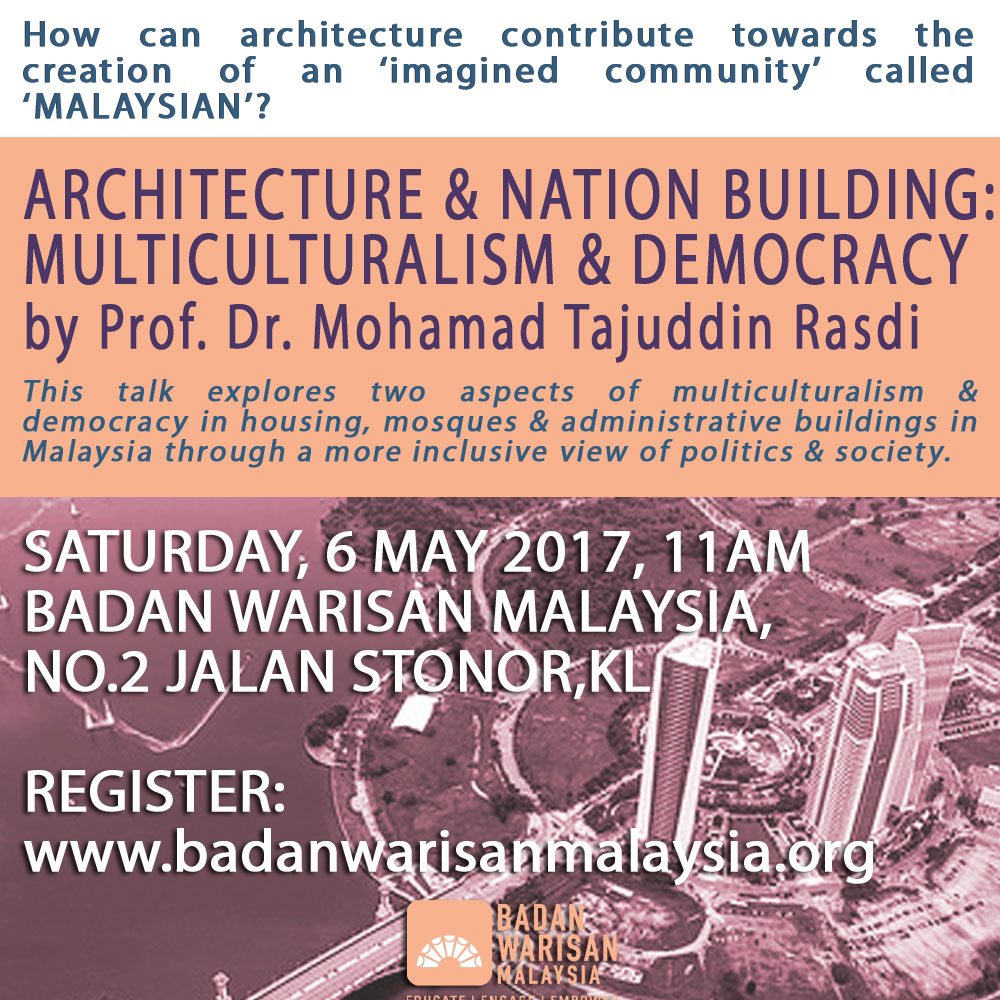culture
Cerita Pangkor by Faisal Abd Rahman

ABOUT THE TALK
The Pangkor Story is a work in progress developed by Faisal and his team working closely with the Northern Corridor Implementation Authority. Originally developed as a training programme for the local taxi drivers to be Pangkor Island Guides, Faisal found that there were many cultural and heritage firsts in Pangkor that had to be documented. This has become the Pangkor Story – the Cultural Heritage Map of Pangkor Island. Want to learn about Frank Sinatra’s connection with Pangkor or who are the Kwantong in Pangkor?
Come join us and meet the team behind the project!
ABOUT THE SPEAKER

Faisal Abd Rahman is a sought after tourism and training expert and frequently gives talks on a variety of subjects. He has developed many modules for tourist guides, cultural heritage guides, and national service trainees. Currently, he is focusing on community-based tourism initiatives.
Turtle Tales Talk & Exhibition

Turtle Tales: Talk & Exhibition at Badan Warisan Malaysia is in conjunction with World Turtle Day! The exhibition will be on going for 1 month from 13 May to 13 June 2017 whereas the talk will be on 21 May 2017.
About the Exhibition
 This month long exhibition features paintings and drawings from the book ‘ I love Sea Turtles’, a collaboration between sisters Yi Xuan, 15, the writer of the book and Yu Jing, 11, the illustrator of the book.
This month long exhibition features paintings and drawings from the book ‘ I love Sea Turtles’, a collaboration between sisters Yi Xuan, 15, the writer of the book and Yu Jing, 11, the illustrator of the book.
The paintings and book were created after the sister’s witnessed the sea turtles laying eggs, which then ignited the sister’s passion and dedication in helping to save these sea creatures. The sisters will be at Badan Warisan Malaysia on 21 May to share their experiences and talk about their adventure and future projects.
About the Talk

The talk will take place on 21 May 2017, given by the Turtle Conservation Society of Malaysia. The talk will feature a presentation of the different species of sea turtles found in Malaysia, their conservation status, feeding habits and threats that they face.
Audiences will also get to know TCS, their objectives, the research, conservation, education and awareness programmes that have been conduct.
The talk will also focus on the two critically endangered species of fresh water turtles in Malaysia that TCS is focused on.
Architecture & Nation Building: Multiculturalism & Democracy
The talk focuses on how architecture can contribute towards the creation of an ‘imagined community’ called ‘Malaysian’ through a discourse of multiculturalism and democracy as the main reference points of design. Historically, the call for a national architectural identity was received with great interest by Malay architects who produced many traditional revivalist buildings and also by non-Malay architects with emphasis on climate and local materials. Neither of the two extremes had taken multi-culturalism and democracy into their design approaches and discourses. What we find are either simplistically interpreted post-modern attempts and at the other extreme we find literalist modernism products with a number of architects engaging in regionalism using climate and material in a more daring manner.
Although the regionalist in Malaysia has a better edge in terms of a more creative and meaningful design, their approach would be most inspiring if the aspects of multi-culturalism and democracy were integrated. Many architects either seemed too frightened of political backlash or they are uncertain how these two aspects can be used in architecture. I will concentrate on these two aspects of multi-culturalism and democracy in my criticism of housing, mosques and administrative buildings in Malaysia by reinterpreting the rituals and values within a more inclusive view of politics and society and the early modernist framework of design.
About the Speaker
Professo r Dr Mohamad Tajuddin Mohamad Rasdi is a prolific writer in architecture, politics, social issues, religious matters and education. Prof Dr. Mohamad Tajuddin was educated in the USA at the University of Wisconsin, Milwaukee where he obtained his Masters and Bachelor of Science in Architecture.
r Dr Mohamad Tajuddin Mohamad Rasdi is a prolific writer in architecture, politics, social issues, religious matters and education. Prof Dr. Mohamad Tajuddin was educated in the USA at the University of Wisconsin, Milwaukee where he obtained his Masters and Bachelor of Science in Architecture.
He was Professor of Architecture at UTM for 10 years and now at UCSI University. Professor Tajuddin has authored and published 40 books to date on architecture concerning Islam, the mosque, housing, community building and planning of administrative centres. He was a columnist for several years with the Utusan Malaysia and with The Star. Prof Tajuddin is also responsible for writing hundreds of articles in architecture for the encyclopedia of architecture published by the national publication.
He has written many articles in the media concerning various issues of architecture, democracy, multi-culturalism and education. He is also frequently interviewed by online media news like malaysiakini and Freemalaysiatoday on national political and social issues.



















